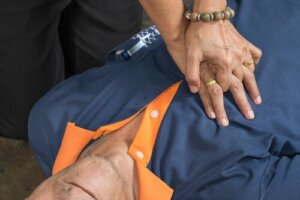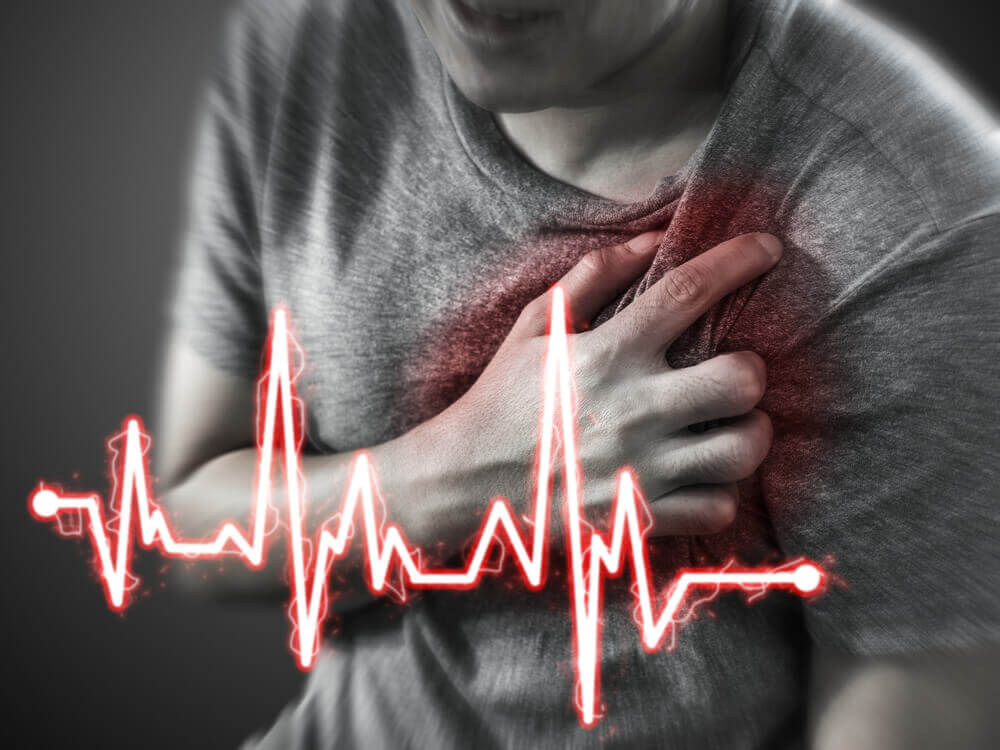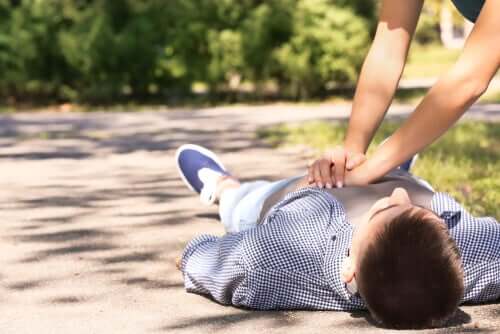The Chain of Survival

The chain of survival is a series of steps that must be carried out when a person suffers a heart attack or respiratory arrest. The aim is to reduce the chances of a fatal attack and to reduce any damage or sequelae that may ensue.
Out-of-hospital cardiorespiratory arrest is one of the leading causes of death in Europe and worldwide. To address this situation, the American Heart Association (AHA) proposed the Chain of Survival in 1991. Everyone should know about it and be able to apply it if necessary.
When a heart attack or cardiopulmonary arrest occurs, time is crucial. The faster we take action, the greater the victim’s chances of survival. The chain of survival indicates the basic steps to follow to help a person in these cases.
Steps of the chain of survival
The central purpose of applying the chain of survival is to get a person’s breathing or heart beating again. The steps to follow vary somewhat, depending on whether if the person who has suffered the cardiac arrest is an adult or a child.
The adult chain of survival includes the following links:
- Identification and alerting: This involves recognizing that a person is in cardiac arrest. The first thing to do is to ask someone to call an ambulance, while resuscitation maneuvers are initiated.
- Manual cardiopulmonary resuscitation (CPR): This is performed manually and involves chest compression and mouth-to-mouth resuscitation. It’s a vital action to keep the patient alive.
- Electrical defibrillation: This means using an electrical defibrillator to reduce the arrhythmia. Both this step and the previous one seek to restore the normal rhythm of the heartbeat.
- Advanced CPR or life support: This is the professional care received by the patient once the ambulance arrives.

Keep reading: Work Stress Associated with Risk of Heart Attack
Chain of survival in children
In the case of children, the chain of survival presents some variations. In these situations, it’s very important to perform manual CPR maneuvers as soon as possible, even before calling for help. Time is a more critical factor when children are involved.
In this case, the links are as follows:
- Prevention: Being alert to the condition of children while they’re sleeping or eating is fundamental. In general, cardiac arrests in children under 8 years of age are the result of shock or respiratory failure.
- Resuscitation: We must perform resuscitation maneuvers very quickly. They’re essential, especially during the first two minutes.
- Calling emergency services: After two minutes of resuscitation, request help.
- Treatment: Corresponds to effective advanced life support or professional help.
- Monitoring: This includes care after the recovery from cardiac arrest.
Recognition and early CPR
Recognition is fundamental and constitutes the first link in the chain of survival. The symptoms of cardiac arrest are:
- Intense chest pain: usually on the left side
- Excessive and cold sweating
- Dizziness or lightheadedness
- Loss of consciousness or fainting
It’s important to secure the area, i.e. take the person to a safe place. In the meantime, speak loudly and try to get the person to talk back, or babble, to check if they’re still conscious. If the helper is alone, they should shout for others to call the emergency services and not leave the person.
The next step is to perform resuscitation maneuvers, which basically consist of placing the person on a hard surface and hyperextending their neck. Then, check if they’re breathing and, if so, lay them on their side. If the person isn’t breathing, the helper should apply cardiac massage and mouth-to-mouth resuscitation.

Discover: How to Make a Travel First Aid Kit
Early defibrillation and aftercare
While a helper is performing these actions, the people present should try to locate a defibrillator. Many public places have them, and it’s also common for police or firefighters to carry them. In conclusion, defibrillation is the most effective measure to get the heart working.
It’s simply an electric shock to help the heart work again. If defibrillation is performed within three to five minutes after the arrest, the chances of survival increase by 50 to 70%.
The next step is to wait until the medical personnel are present and to be alert to answer their questions. In the case of children, we must make sure that they’re in the hands of a responsible adult relative or an institution that guarantees their care.
All cited sources were thoroughly reviewed by our team to ensure their quality, reliability, currency, and validity. The bibliography of this article was considered reliable and of academic or scientific accuracy.
Fernández, J. Á., Soto, M. Á. M., & Zapata, M. R. (2001). Supervivencia en España de las paradas cardíacas extrahospitalarias. Medicina intensiva, 25(6), 236-243.
This text is provided for informational purposes only and does not replace consultation with a professional. If in doubt, consult your specialist.








